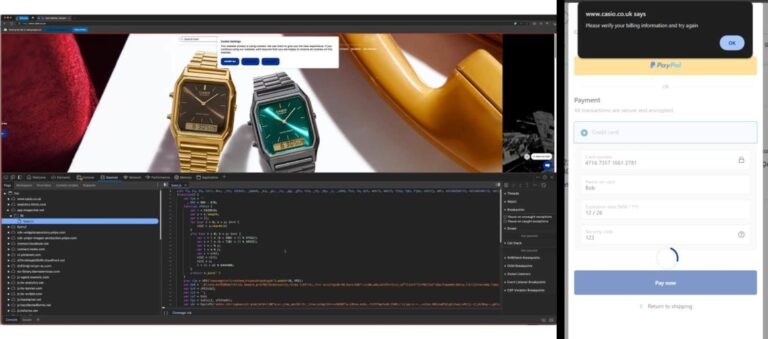In the realm of cybersecurity, effective wordlist generation and management are essential for tasks such as password cracking and security testing. SecLists is a robust tool that facilitates this process by providing a comprehensive collection of wordlists designed to enhance security strategies.
This article examines the advantages of utilizing SecLists, offers a step-by-step guide for generating and organizing wordlists, and presents recommendations for customization and best practices. Whether one is a seasoned professional or an inquisitive enthusiast, this content will provide valuable insights to strengthen security efforts.
What is SecLists?
Table of Contents
SecLists is a comprehensive collection of various security testing lists utilized by penetration testers to augment their security assessments. This robust repository, hosted on GitHub, includes an array of wordlists specifically designed for tasks such as password cracking, directory brute-forcing, SSH brute force, and web application login testing.
The versatility of SecLists enables security testers to either employ default wordlists or develop custom wordlists tailored to specific technologies and server technologies, rendering it an essential resource within the field of cybersecurity.
Within this repository, users can access a variety of lists, including:
- Extensive username lists for identifying potential user accounts
- Diverse password lists that assist in evaluating the strength of authentication mechanisms
- URL lists that facilitate the exploration of hidden or sensitive pages on web servers
- Fuzzing payloads and web shells for assessing application vulnerabilities
- Sensitive data patterns and unique words for comprehensive data analysis
Each of these lists is meticulously crafted with consideration for different server technologies and programming languages, such as PHP, Apache, Java, Go, Python, and Rust, ensuring that penetration testers are adequately prepared to assess vulnerabilities across a wide range of applications.
By integrating these resources, security assessments can be executed more efficiently and effectively, leading to a more comprehensive identification of potential security gaps.
Benefits of Wordlist Generation and Management
Effective wordlist generation and management provide numerous significant advantages to penetration testing and security assessments, allowing security testers to improve their efficiency in password cracking and data collection.
By utilizing customized wordlists, security testers can attain higher success rates and optimize their testing processes. Tailoring wordlists ensures that the generated lists contain unique terms relevant to the specific technologies or applications under evaluation, ultimately resulting in more effective security assessments.
Efficiency in Password Cracking
Efficiency in password cracking is significantly influenced by the quality of the wordlists employed and the capacity to customize these lists for particular targets or scenarios. By leveraging a custom wordlist, security testers can concentrate on specific password patterns or human behavioral tendencies, thereby enhancing their likelihood of successfully brute-forcing passwords during penetration testing.
The selection of tools for generating and managing these wordlists is equally essential for improving the overall success of password cracking efforts.
For example, Cewl is an effective tool that generates custom wordlists by scraping pertinent data from websites, enabling security professionals to create lists that accurately reflect the target’s interests, language, or cultural context. Similarly, Crunch offers users the ability to generate wordlists based on defined criteria, such as length and character sets, thereby providing a flexible approach to creating tailored options.
Collectively, these tools optimize the process of developing wordlists, ultimately resulting in more effective and focused brute-force attacks within testing environments.
Enhancing Security Testing
Enhancing security testing involves the strategic use of wordlists to improve various penetration testing techniques, including directory brute-force and content discovery. By incorporating relevant wordlists into testing workflows, security testers can more effectively uncover vulnerabilities and thoroughly assess the security posture of applications and systems.
The utilization of tailored wordlists not only assists in identifying sensitive data patterns concealed within applications but also strengthens fuzzing methodologies for comprehensive application testing. For instance, during a recent engagement, security professionals employed a curated wordlist that emphasized specific file extensions to expose unsecured assets, ultimately leading to the discovery of sensitive configuration files.
In directory fuzzing scenarios, the strategic application of customized wordlists enabled testers to navigate deeper into complex file structures, revealing unauthorized access points. Effective management of wordlists has proven to be crucial in numerous successful testing cases, where targeted security assessments resulted in the remediation of critical vulnerabilities.
This underscores the importance of a well-structured approach to security testing.
Using SecLists for Wordlist Generation
Utilizing SecLists for wordlist generation is a simple yet effective approach that can significantly improve the penetration testing workflow for security professionals.
By accessing the comprehensive GitHub repository of SecLists, security testers can readily find installation commands and guidelines necessary to download and employ the various wordlists available, each specifically designed for a range of tasks and scenarios.
Step-by-Step Guide
Creating an effective wordlist using SecLists involves a series of systematic steps that utilize command line syntax to ensure seamless integration into the user’s testing environment.
Security testers may begin by cloning the GitHub repository and subsequently navigating through various directories to select either the appropriate default wordlist or to create a custom wordlist tailored to their specific requirements.
- The initial step entails entering the command
git clone https://github.com/danielmiessler/SecLists.git, which is a widely-used GitHub repository. in the terminal, which downloads the repository to the local machine. - After cloning, users should navigate into the SecLists directory by employing the command
cd SecLists. - Within this directory, users will encounter an organized structure of wordlists categorized by their intended purpose, such as passwords, usernames, and more.
- To select a default wordlist, one can utilize the command
lsto list the contents, followed bycat usernames.txtto view the file. - For those requiring specialized lists, the creation of a custom wordlist can be achieved using the command
echo 'custom_entry' >> custom_wordlist.txt.
These processes are designed to maintain compatibility across various Linux distributions, such as Kali Linux, Debian, CentOS, and Fedora; however, slight variations in command syntax may be required depending on the specific shell environment utilized by the system.
Managing and Organizing Wordlists with SecLists
Effective management and organization of wordlists are essential for penetration testers who require streamlined access to various types of lists during their security assessments. This includes managing wordlists for multiple types of targets and scenarios, such as directory fuzzing and content discovery.
Proper organization enables testers to quickly locate and utilize relevant wordlists that are tailored to specific requirements, thereby significantly enhancing their efficiency and effectiveness in testing scenarios.
Tips and Tricks for Efficient Management
Efficient management of wordlists necessitates adherence to a set of best practices that can assist security testers in optimizing their data collection efforts and enhancing the effectiveness of their custom wordlists. By prioritizing the incorporation of unique terms and regularly updating their lists, testers can ensure they are utilizing the most relevant and effective wordlists available.
To streamline this process, the implementation of clear naming conventions is essential; this approach facilitates the quick identification of the purpose and relevance of each list. Regular audits can mitigate clutter and ensure the removal of outdated or ineffective entries, thereby allowing for the inclusion of more targeted options.
It is imperative for security testers to remain informed about emerging trends and threats within the cybersecurity domain. By adapting wordlists to address newly identified vulnerabilities, they not only improve their testing effectiveness but also align their strategies with the dynamic landscape of security challenges. Such proactive management fosters continual improvement and reliability in their testing processes.
Customizing Wordlists for Specific Needs
Customizing wordlists to meet specific requirements is imperative for penetration testers seeking to enhance their effectiveness during security assessments.
By tailoring wordlists to address particular technologies, programming languages, such as Java or PHP, or by incorporating relevant details pertaining to the organization being evaluated, security testers can substantially increase their likelihood of successfully identifying vulnerabilities.
Adding and Removing Words
The process of adding and removing words from a custom wordlist is critical to the efficiency of security testing and password cracking efforts. By meticulously curating these lists, security testers can concentrate on the most relevant and effective passwords or usernames, thereby enhancing their chances of successful penetration testing.
This process entails utilizing various tools and command line syntax that facilitate these modifications. For example, utilities such as John the Ripper or Hashcat enable users to efficiently append new entries through straightforward commands and easily remove outdated or ineffective entries. Tools like the Cewl tool and Crunch tool are also invaluable for generating custom wordlists and brute-forcing passwords, ensuring comprehensive security assessments.
The importance of maintaining an updated wordlist cannot be overstated, as a relevant and dynamic list significantly contributes to more effective vulnerability identification, ensuring that security professionals remain one step ahead of potential breaches. By incorporating tools like the CWFF tool and leveraging unique words, security testers can enhance their penetration testing processes.
An optimized wordlist not only conserves time but also considerably increases the likelihood of successfully cracking passwords, thereby enhancing overall security assessments. This is especially crucial when dealing with specific technologies or conducting web-application login assessments.
Combining and Filtering Wordlists
The combination and filtering of wordlists represent an effective strategy for creating a comprehensive and efficient wordlist specifically tailored for penetration testing scenarios. By merging multiple lists and eliminating duplicate entries, security testers can ensure that their custom wordlist consists solely of unique terms relevant to their testing objectives. This approach is invaluable for directory brute-force and server technology-specific assessments.
The utilization of command line tools such as ‘cat’, ‘sort’, and ‘uniq’ can significantly enhance the efficiency of wordlist management. For example, the command ‘cat list1.txt list2.txt | sort | uniq > combined.txt’ not only merges the files but also removes redundancies, streamlining the process.
Moreover, scripting methods, such as Python scripts, offer advanced filtering capabilities, enabling testers to exclude specific patterns or lengths of words, thus further refining the wordlist.
The resulting optimized wordlist can contribute to more efficient penetration testing, as inundating tests with irrelevant entries often results in wasted time and resources, ultimately undermining the effectiveness of the methodologies employed.
Best Practices for Using SecLists
Implementing best practices for utilizing SecLists can significantly enhance the effectiveness of penetration testing while ensuring data privacy and security during assessments.
By adhering to established guidelines and methodologies, security testers can optimize the benefits derived from the various wordlists available in SecLists, resulting in more comprehensive and reliable security evaluations.
Ensuring Data Privacy and Security
Ensuring data privacy and security is a paramount concern for security testers utilizing tools such as SecLists for penetration testing. By adhering to ethical standards and best practices, testers can effectively safeguard sensitive information while conducting comprehensive security assessments.
This diligence extends beyond mere legal compliance; it is a vital component in maintaining trust with clients and stakeholders.
Effective strategies for ensuring data privacy include:
- Anonymizing data whenever possible
- Securing consent from relevant parties
- Regularly reviewing the scope of assessments to ensure that only necessary data is accessed
Organizations must acknowledge the severe implications associated with data breaches, which can result in financial loss, reputational harm, and regulatory penalties. Consequently, prioritizing responsible data handling practices is essential for fostering a culture of security, where ethical considerations guide the efforts of security professionals in their pursuit to identify vulnerabilities without compromising privacy.
Maximizing Wordlist Effectiveness
Maximizing the effectiveness of wordlists is essential for security testers who seek to enhance their results in penetration testing and security assessments. By prioritizing the inclusion of unique terms and continuously refining their custom wordlists, testers can significantly improve their chances of identifying vulnerabilities during their testing processes.
To achieve this objective, it is important for security professionals to regularly update their wordlists to incorporate terms that reflect the latest trends in cyber threats and the evolving technological landscape. Additionally, adapting their lists based on newly discovered vulnerabilities is crucial, as reliance on outdated information can undermine the effectiveness of their assessments.
Utilizing custom wordlists specifically tailored to target environments can further enhance the relevance and efficacy of testing efforts. By implementing actionable strategies such as conducting research on industry-specific terminology and collaborating with peers for valuable insights, security testers can substantially improve their penetration testing outcomes.
Frequently Asked Questions
What is SecLists?
SecLists is a collection of multiple types of wordlists that are used for various security purposes, such as password cracking, fuzzing, and enumeration.
What types of wordlists are included in SecLists?
SecLists includes password lists, username lists, fuzzing lists, SQL injection lists, and more. It also includes special purpose lists for specific platforms like WordPress or Joomla.
How is SecLists useful for security professionals?
SecLists provides a comprehensive collection of wordlists that can assist security professionals in testing the strength of passwords, identifying vulnerabilities, and conducting penetration testing. With resources such as username lists, password lists, URL lists, and fuzzing payloads, SecLists is indispensable for content discovery and directory fuzzing.
Can I contribute to SecLists?
Yes, SecLists is an open source project and welcomes contributions from the community. You can submit new wordlists or updates to existing ones through the project’s GitHub page. Being included in a GitHub repository, SecLists allows for collaborative input from security testers worldwide, enriching its breadth of resources.
How frequently is SecLists updated?
SecLists is updated on a regular basis, typically every few months, with new wordlists and updates to existing ones. You can follow the project on GitHub to stay updated on the latest releases and installation commands for various Linux distributions like Kali Linux and Debian.
Is SecLists legal to use?
SecLists is a collection of publicly available wordlists and is intended for educational and security testing purposes only. It is important to use these wordlists responsibly and ethically. Always ensure you have permission before using any tools for security testing.





